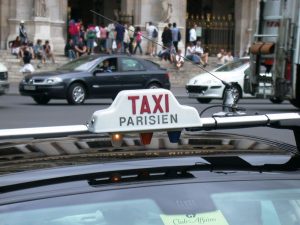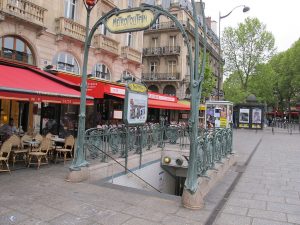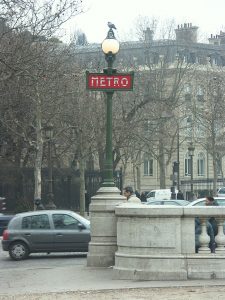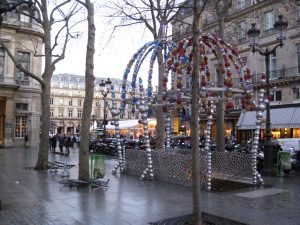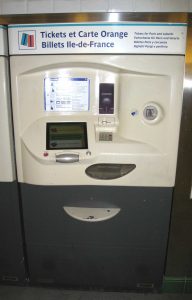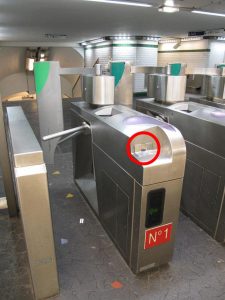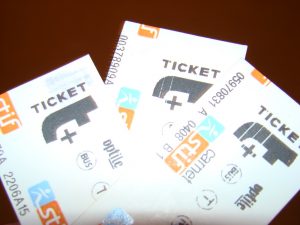Getting Around Paris
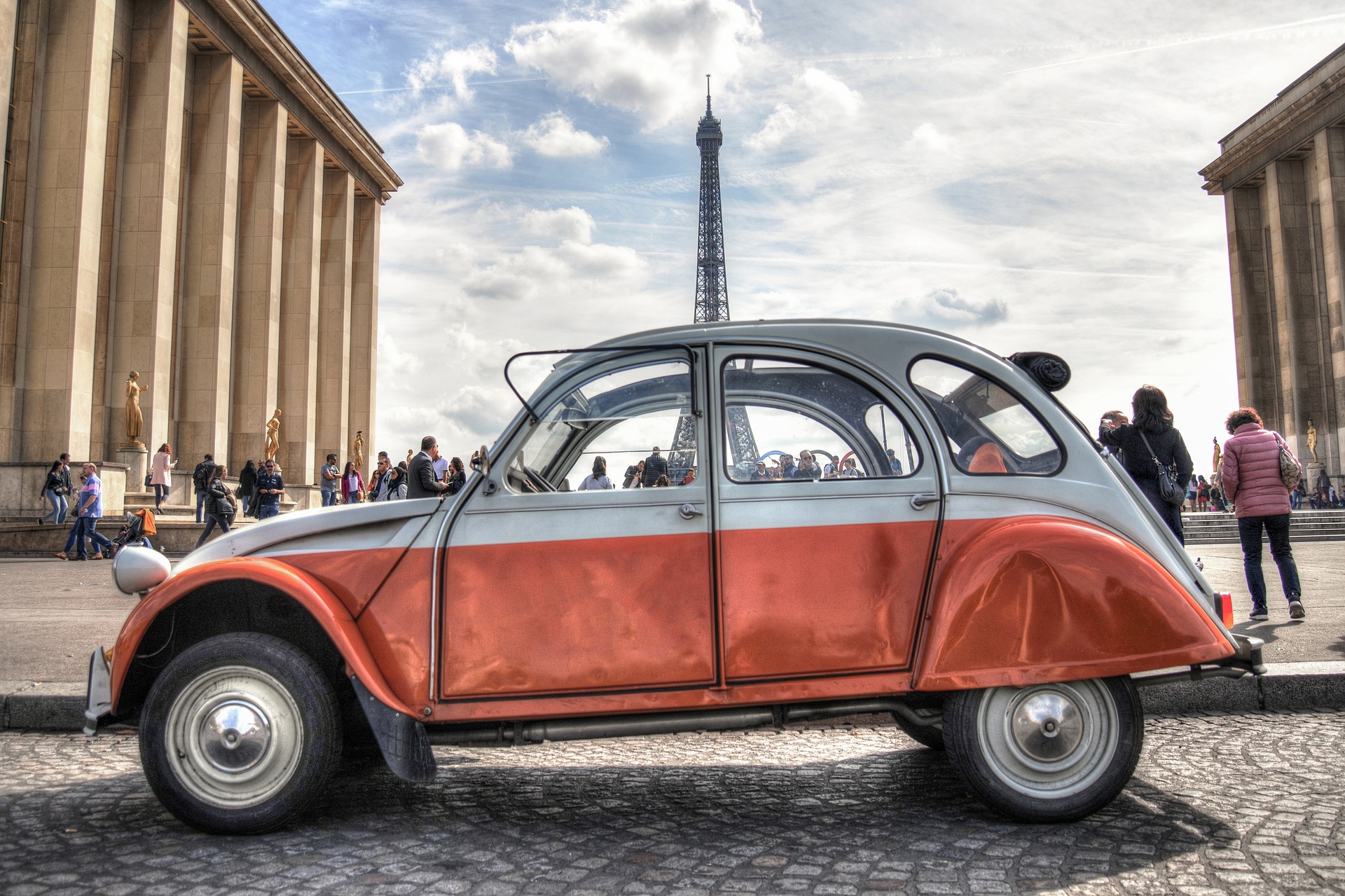
After you put your bags in your room at the hotel, how will you be getting around Paris? There are four main ways to travel around Paris if you are only visiting for a few days. Should you have more time, consider taking the bus or riding a bike.
On Foot
For many people, using your own two feet will be the main transport for getting around Paris. Plan carefully and many of the sights you visit in one day will be within walking distance of each other. Yet, even the best plans do not always put you near enough to walk. Sometimes you may need to get across town quickly in order to make the most of your time. Or, you may want to take a cab to Sacré-Cœur rather than take a funiculaire or walk up hundreds of steps. Getting around Paris often requires multiple forms of transport.
Taxi
Taxis are a good way of getting around Paris. They travel above ground so you can see the street scene, they pick you up and then deposit you at your destination. Of course, the downside is the cost. But, a few splurges to make your trip to Paris more comfortable at times may be worth the expense. At least it is good to know taxis are an option and where to find them.
Taxis will be scooting along past you nearly everywhere in Paris. If you are looking for a taxi, square blue signs with TAXI in white indicate a taxi stand. That is where taxis line up for fares. Most of the time, this is the easiest place to find a taxi. However, sometimes there are no taxis at the taxi stands – especially late at night.
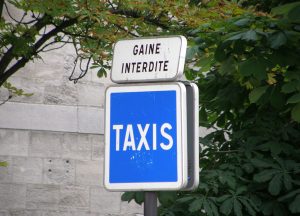
Sign for a taxi stand.
Want to hail a taxi on the street? Do not expect a driver to stop. You can get lucky every now and then and catch a driver, so it is worth trying. Just don’t count on it. If you are near a large hotel, or are staying at a large hotel, taxis will circle around and/or an attendant can hail one for you.
Taxi Spotting in Paris
Taxis have roof top signs. A white light means the car is free. An orange light means the car is occupied. Taxis charge a flat fee to begin their service, then so much for distance, and what Paris zone you are in, time of day, number of passengers, if you have luggage…. It is like a normal taxi in the United States – extra moolah depending on lots of variables. But, if you are 2-3 people traveling in central Paris, expect to pay 6-12 euros for a ride. The taxi company, G7, has information in English on calculating fare charges.
The driver will start the meter as the car takes off. If you want a guess as to how much it will cost before you get in, ask the driver for a number. But, your French had better be good to understand the answer. And most likely he will not understand your French. If he points at the meter, then the meter will govern the cost.
Like buses, taxis are not suggested during rush hour. Paris is a big city and traffic can overwhelm the streets. Most likely, you do not want to sit still in traffic and watch the meter tick.
Taxi Costs
When you arrive at your destination, pay the driver. The fare will show on the meter (so no spoken French is required). You do not have to tip, but rounding up is appreciated. Or, if the fare is an even number, you can give the driver an extra half euro or euro.
Before you shut the door and leave your taxi behind, check and double check the back seat and the floorboard. Check for bags or glass cases and anything else that may have been loose when you got in. You will not have a chance to recover anything that is left in the taxi. Remember to double check each other.
Although I hope you have no problems of any kind while you are in Paris, should you have a dispute with a taxi driver, get out with all of your belongings first. Then, have your disagreement. Or, just pay the meter amount and be done with it and don’t think about it again.
When you order a taxi, the rate starts from the point the taxi leaves to come and collect you – not from the time you get in the taxi.
Should you want to pay the fare with a credit card, mention that when you order the taxi. Or, have the person at the hotel do this for you.
Taxi Services
The French government provides taxi services around the country with geolocation technology. Taxi companies G7, Alpha and others have apps for real time e-hailing a taxi.
Before you leave on your trip, you may want to download one company’s app and set up an account. Enter your credit card information to verify the credit card is accepted so you have no trouble getting around using your phone for payment.
Here are a couple of taxi companies that you will see around town. They also take reservations and you can use their websites to order a car and pay.
Alpha; 01.45.85.85.85; www.alphataxis.fr
G7; 01.47.39.47.39; www.taxisg7.com (can book online in English)
Métro
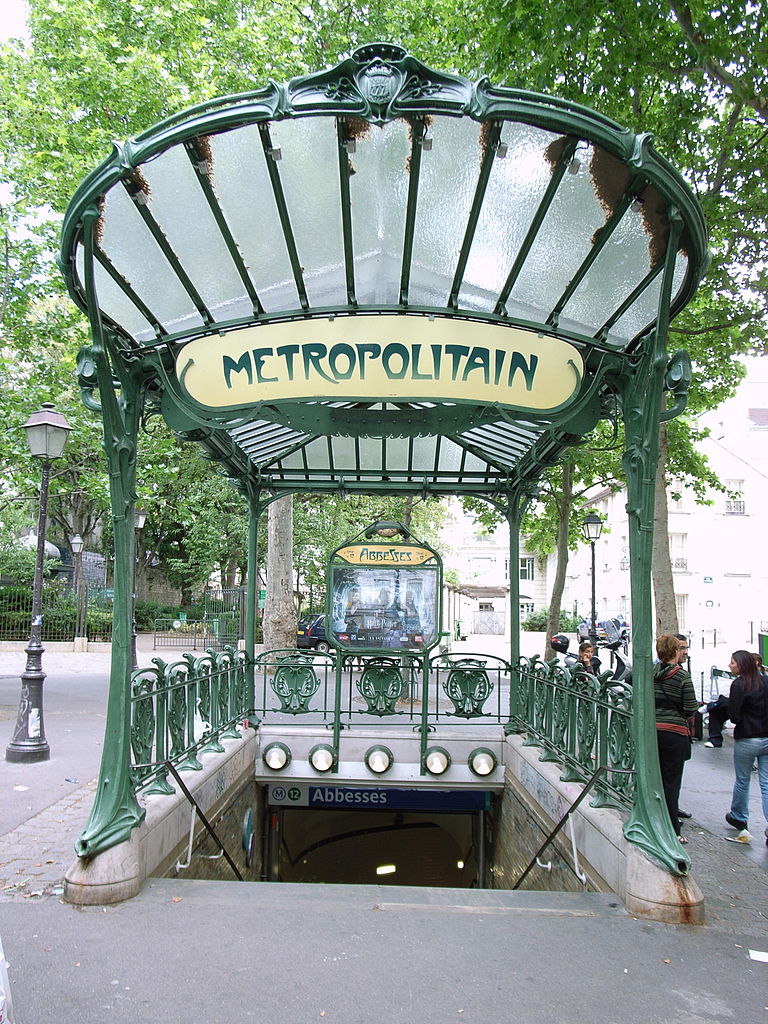
A variety of Métro signs and entrances/exits beckon all over Paris. Like the stations and the trains, the entrances vary from original art nouveau to modern to essentially a hole in the ground with a rail around it. Also note, some entrances/exits have escalators, but most have only stairs.
Find Your Bearings and Get Help to Navigate the Métro
Descend into the earth and on the walls you will find maps of the Métro system, or reach in your satchel and pull out your pocket Métro map.
The lines are easily picked out because each line is a different color. Also, the lines are numbered, but most people know the line by the beginning and ending destination points.
Depending on the station, you will see ticket vending machines that are multi-lingual and ticket windows with a person behind the glass selling tickets.
After getting a ticket, you will see turnstiles and a ticket validating machine. Approach and insert your ticket in the machine. The ticket will be sucked in and validated (stamped with purple ink and electronically processed) and then pop out on the top of the machine. Collect your ticket before going through the turnstile.
Hang on to your Métro ticket until you exit the Métro station at street level. Sometimes, agents come through to check your ticket, and if you do not have it, be prepared to pay a steep fine on the spot. Tickets are required to exit the RER station. You must send it back through the validating machine in order for the turnstile or exit gate to open.
Musicians and performers frequent the Métro lines you will be using. They hop on with you, perform, pass the hat and then move onto the next car. If you feel generous and are happy with the performance, feel free to toss in a coin.
Métro Tickets & Fares
Buy tickets from a person at the station’s ticket window or from the multi-lingual machines. Credit cards must have chip technology and not all cards with chips work. As long as you are staying within the City of Paris city limits, you do not need a special ticket. The common everyday ticket is named, “Ticket t+.” “t+” is printed on the left side. A single one-way ticket is 1.90€. Buy a pack of 10 tickets for 14.90€ – a 25% savings. The t+ ticket allows you to travel by bus, metro, tram, and RER (within Paris city limits), and on the Montmartre funicular.
Getting around outside the City of Paris requires a special ticket. For example, the airports or Versailles. You will still take the RER, and enter a station in Paris, but the ticket needed must be purchased with a destination. Remember, you will need the ticket to exit, and conductors come through checking tickets. Without the correct ticket, be prepared to pay a substantial fine on the spot.
Take a look at https://www.ratp.fr/en to find maps, timetables, types of tickets, user guides and an easy to use trip planner on the home page.
If you have taken the Métro somewhere at night and you are planning to take it back to your hotel, make sure you plan ahead. From Sunday through Thursday, the trains stop running between midnight and 1:00 a.m. On Friday and Saturday nights, the trains stop around 2:00 a.m.
Métro Instructions
Remember the number one rule in riding the Métro – If you are confused or think you are lost, get out at the next stop, move to the side out of the way of the passing people and get your bearings. You may be going the right direction, but it is okay to confirm and get back on. It will only be a few minutes until the next Métro comes along and it will not cost any more money.
If you have gone the wrong direction, cross over to the other side and get back on, then you will be going the right direction. The Métro in Paris is one of the simplest in the world. The line you are riding goes and comes only one way – back and forth. You determine the direction by looking at the names of the stops at the ends of the line. Board the Métro going in the direction that stops at the station you need.
General Métro Instructions:
- Find the Métro stop that is nearest to the place you want to visit.
- Find that stop on the Métro map and determine the color of the line that stop is on.
- Follow that color towards the left and learn the name of the station at the end of the line.
- Then, follow the color back to the right and learn the name at the end of the line in that direction.
- Put those two names together and you have the name of your Métro line.
- If you want, verify the color of the line and the line number. I think that is two more things to try to remember. Meaning two more things I could easily forget, so I focus only on the beginning and ending stations.
- Find yourself on your map and see if you are close to a stop on that line. If so, great.
- If not, find a stop that is near where you are and then go to that entrance.
- Buy a ticket, look for the signs listing the stops, and the ending point for the direction you are going.
- Go to the platform and catch the train.
- Get out at your stop and exit the station. A map of the area (plan du quartier) is near the exit and you can get your bearings.
For detailed examples, click here.
Take the Bus
You could add buses as a way of getting around. Buses are great if you have a lot of time and want to look out the window. (And, who doesn’t want to have loads of time and look out the window?) But, before taking the bus, consider how much time you have between places on your Paris List. Most likely not a lot, but if you find some time, look for a bus stop.
Each stop has a sign with the bus number and a map showing stops along the way. The signs/maps are similar to the Métro system, so it is easy pretty easy to see where you will go. Worst case scenario, the bus goes where you do not want to go. So, get out and get on a return bus that will take you back to where you got on.
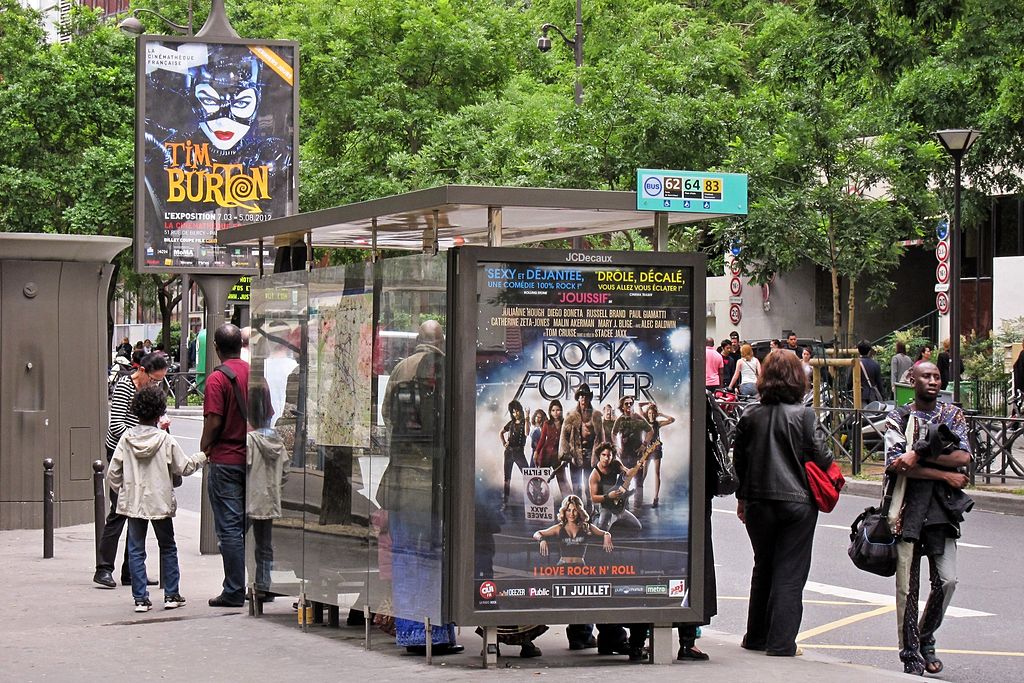
Getting Around – Timing Can Make A Difference
Rush hour is not a good time to take a bus or you will be cooling your heals with the locals for longer than you want. Interested in learning more about the buses? Take a look at https://www.ratp.fr/en to find maps, timetables, user guides and an easy to use trip planner on the home page.
Buses within the City of Paris require “t+” tickets. (Ticket t+ are the common everyday tickets sold for use within the city limits of Paris. In other words, not a special ticket, just look for the symbol for the bus – “BUS” inside a circle) on the front of the ticket. A single one-way ticket is 1.90€. Buy a pack of 10 tickets for 14.90€ – a 25% savings. The t+ ticket allows you to travel by bus, metro, tram, and RER (within Paris city limits), and on the Montmartre funicular.
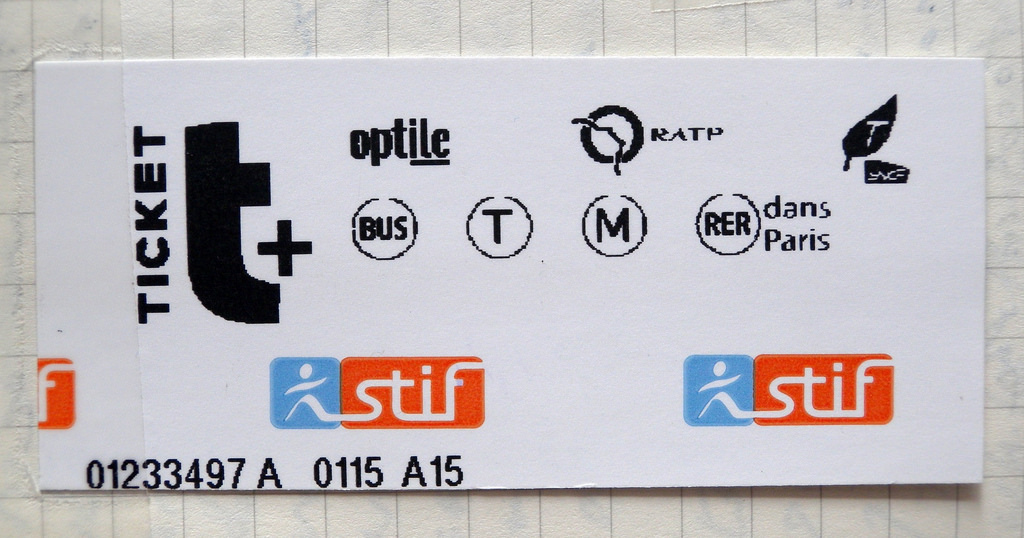
Buy t+ tickets in all Métro and RER stations and at bookstores, newspaper stands, licensed tobacco shops, and convenience stores.
Ride a Bike
You could also add in bicycles for getting around. Paris has a convenient system of rentable bikes that you get on in one spot and drop off at another spot. But, I have never felt comfortable riding a bike in traffic in a foreign country. Adventurous? Check out the system at https://www.velib-metropole.fr/en_GB
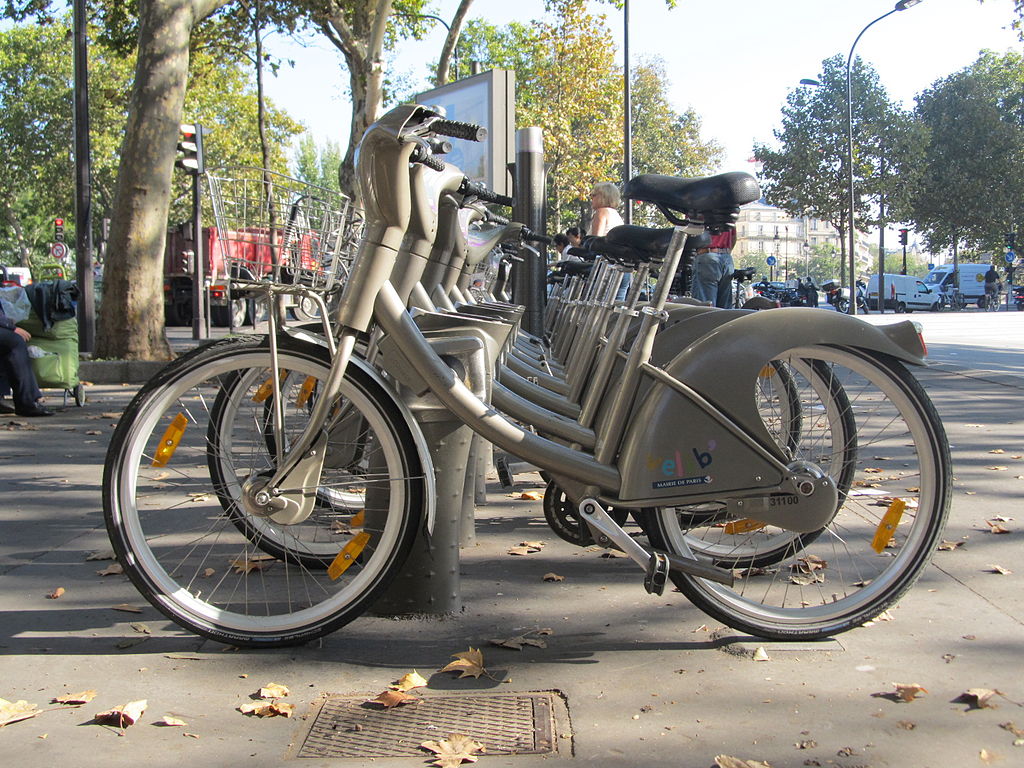
Rental Car?
Don’t even think about it!
Caution
Remember, workers in France can strike. Buses, subways, and even taxis, can go on strike. Your feet may go on strike after the first full day of walking! So it is good to know alternative ways of getting around.
